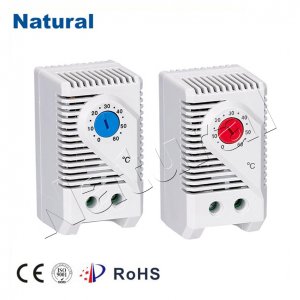In our modern world, where energy consumption and environmental concerns are growing, the demand for more efficient and sustainable solutions has never been higher. One such solution gaining traction is the regulable thermostat. This innovative technology allows users to exercise precise control over their indoor climate, leading to significant energy savings and enhanced comfort. In this article, we will delve into the benefits of regulable thermostats and explore how they contribute to energy efficiency.

Regulable thermostats, also known as programmable or smart thermostats, are a remarkable advancement in the field of heating, ventilation, and air conditioning (HVAC) systems. These thermostats empower users to set specific temperature schedules according to their daily routines and preferences. Unlike traditional thermostats that require manual adjustments each time the temperature needs changing, regulable thermostats offer automation and customization. One of the key advantages of regulable thermostats is their ability to optimize energy consumption. By programming temperature settings based on occupancy patterns, users can avoid unnecessary heating or cooling when no one is at home or when they are asleep. This targeted approach prevents energy wastage and can result in substantial reductions in utility bills over time. Studies have shown that households using regulable thermostats can save up to 10-20% on their heating and cooling costs, making these devices a wise investment. Moreover, regulable thermostats contribute to a more comfortable living environment. With the ability to set precise temperatures for different times of the day, users can ensure a seamless transition from a cozy sleep temperature at night to an energizing temperature in the morning. This level of comfort customization enhances well-being and productivity. Another noteworthy advantage of regulable thermostats is their integration with smart home systems. Many of these thermostats can be controlled remotely through smartphones or other smart devices. This feature is particularly valuable for individuals with fluctuating schedules or those who often forget to adjust the thermostat before leaving home. The remote control capability allows users to modify settings from anywhere, ensuring that energy is not wasted by cooling or heating an empty home. Furthermore, regulable thermostats often come equipped with learning algorithms that adapt to users’ preferences and behavior over time. These algorithms can learn when you typically arrive home, when you leave, and what temperature settings you prefer during different times of the day. This self-learning feature ensures that your home’s climate control is optimized without the need for constant manual adjustments. In the broader context of environmental conservation, regulable thermostats play a crucial role in reducing carbon footprints. By decreasing energy consumption through more efficient HVAC usage, these devices help mitigate the demand for fossil fuels and decrease greenhouse gas emissions. As a result, they contribute to the global efforts to combat climate change. In conclusion, regulable thermostats represent a significant step forward in enhancing energy efficiency and creating a more sustainable future. Their ability to automate and customize indoor climate control, optimize energy consumption, and provide remote access through smart home integration makes them indispensable tools for modern living. As we strive to balance comfort with environmental responsibility, regulable thermostats stand out as a practical solution that benefits both homeowners and the planet alike.